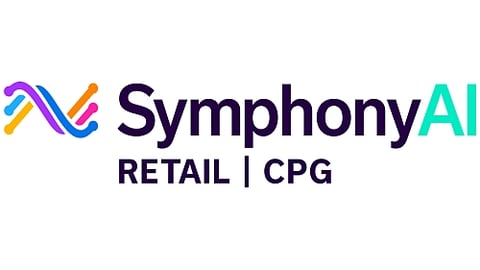What Is Taste Intelligence?
Keto fan? Cholesterol-conscious? Always interested in the latest health trends? Thanks to taste intelligence, it’s now easier than ever to determine what flavors consumers are looking for, what’s motivating their decisions and what upcoming health-related trends should be on your organization’s radar.
Taste intelligence delivers personalized customer insights and preferences that are focused on food and beverage, including flavors, health preferences, trending ingredients, special diets and more. It engages robust data models to help organizations delve into consumers’ complex interests and motivations, with the goal of maximizing sales and marketing strategies. Artificial intelligence (AI) and machine learning (ML) combine to deliver deeper insights into consumer purchase behavior, value perception, marketing responsiveness, customer experience and more, helping grocery retailers intuit their customers’ needs and wants ahead of the curve.
[Read more: "Taste Testers Pick Best New Grocery Foods and Snacks"]
Why More Organizations Should Indulge in Taste Intelligence
Taste intelligence is as good as it sounds.
For starters, taste intelligence supports hyper-personalized marketing, helping organizations target specific consumer needs and interests on a micro level. This intelligence can be used to orchestrate new marketing tactics, update current outreach initiatives and tap into trends before their competitors do. Hyper-personalized experiences across omnichannel touchpoints can lead to highly contextual marketing and purchase strategies based on the latest taste and health trends.
Likewise, this type of customized intelligence can enable the food and beverage industry to enhance its assortment optimization and derive new bundles that are based on health preferences and trending ingredients. When you know that your target customers are seeking gluten-free products, for example, you can set up assortments based on real-life use cases and interests. The same thing goes for other health-and-wellness trends, diet types and flavor preferences, from low-fat foods to spicy flavors and ingredients.
Grocery retailers can also use the novel strategies developed through taste intelligence to optimize overall store layout and to develop new theme-based active selling that’s in alignment with the latest taste trends. It can help your organization identify trends at a designed market-area level, allowing you to quickly capitalize on emerging preferences.
Retailers can now empower customers to build shopping baskets faster. They can offer more contextual substitutions and product recommendations that match their taste and lifestyle.
Finally, food and beverage organizations can enhance their retail media platforms by empowering advertisers with novel outreach and preference-based targeting options that serve to better position newer products and drive ad-based ROI.
All of these benefits can drive interest, sales and growth for grocery retailers going forward.
Getting Started With Taste Intelligence
A robust data model that leverages AI and ML to create the data platform is imperative to establishing a strong foundation for taste intelligence, which can help organizations of all sizes elevate product metadata to power impactful customer intelligence.
Interestingly, underlying taste intelligence data is printed on product labels, made available on CPG websites, captured in various health databases and exists in other forms of unstructured data around the internet. Valuable insights come from marrying this enriched product metadata to existing customer data platforms. This process involves taking a closer look at purchase patterns with a new lens, understanding customer preferences in a unique way and identifying the specific customer segments that are grounded in taste intelligence.
A multi-hierarchical data model that links products to ingredients and nutrients and then goes on to identify patterns and themes is the key to driving these use cases forward as seen in the chart accompanying this article.
These solutions require medical and nutrition expertise on nutrients, taste and ingredient impact on flavors; further, they must leverage advanced NLP (natural language processing) algorithms to ensure that each of these attributes is then identified and captured in an actionable way.
This multi-hierarchical data model, powered by NLP and ML drives the following:
- Reduced Reliance on first-party research: Instead of relying on first-party research, customer intelligence teams can build their proprietary data models using global web and food API (application processing interface) services to provide the information they need to inform proactive decision-making. Proprietary NLP and image-processing algorithms can extract features from item labels and descriptions and elevate the product metadata.
- AI-ML Powered Taste intelligence attributes: Combining the taste intelligence product metadata with customer purchase data helps deduce taste intelligence attributes, e.g., the percentage of customers who are pursuing a keto diet, customers who are cholesterol conscious, customers who like alcohol inclusion in their desserts, etc.
- Robust customer micro segmentation: Combining taste intelligence attributes with other aspects of a customer, such as marketing affinity, lifecycle stage, shopping behavior, loyalty and experience signals, helps organizations identify and operationalize robust customer micro segments. This enables them to orchestrate specific tactics for a cohort of customers.
- Activation of insights: Retailers can now upgrade their targeting lists for hyper-personalized marketing, enhance search recommendations, contextualize product substitutions and optimize their retail media effectiveness with fully customized solutions that operate on top of taste intelligence data. This enables organizations to activate use cases and drive value from taste intelligence insights.
Elevate Data With Taste Intelligence
With personal customer intelligence that detects health goals, emerging trends, taste preferences, flavor affinities and more, you can elevate your metadata with best-in-class customer insights.
In the endless pursuit of deeper customer insights, taste intelligence is a meaningful step toward hyper-personalization and notable results. The next few years will witness some major leaps in how retailers think about customer insights and experience personalization, with taste intelligence leading the way.





